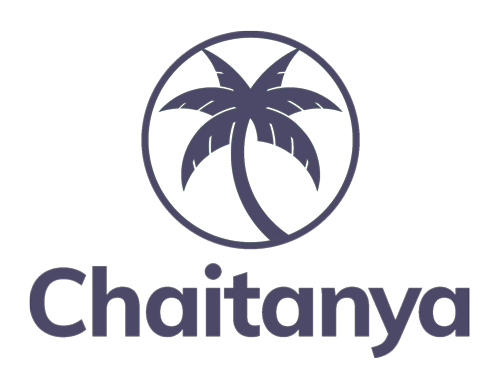October 21, 2022
Introduction
Microfinance is one of the popular terms in today’s time. Came into existence in the 80s, it emerged as a great solution for poverty elevation and also for empowering women. It helps women become self-dependent.
Though microfinance has vast potential, this sector faces several challenges that are related in terms of its accessibility, especially in rural India. It’s an important type of banking service that is meant for those people who are not capable of availing of formal financial services.
The main aim of microfinance is to improve the lifestyle of those unemployed and low-income populations. In India, several institutions offer microfinance services and offer their helping hands to improve the life and condition of the needy.
Various institutions offer complete support including setting up bank accounts, lending, and also offering complete micro-insurance products. In many developing countries including India, financial services with the help of different formal channels don’t match the demand of the rural need. Therefore, microfinance helps many small-scale businesses develop by offering that greater financial stability.
The dearth of indication that it is recognized as employment is the fundamental factor behind the failure of so many formal banking institutions in a nation like India, especially when they serve the rural poor. Another reason for the failure is collateral that is provided by the poor when they apply for loans.
Apart from this, the higher risks of transaction costs of those of small loan saving deposits tend to create a lot of difficulty for those of banking as well. It causes no alternative for the needful and thus they contact those many local moneylenders for borrowing money at higher interest rates.
Story of Microfinance in India
In India, the concept of microfinance first came into existence in 1974. The credit goes to the Self-Employed Women’s Association (SEWA) established in Gujarat for bringing microfinance into popularity.
After this, various banks have been offering financial services to many people who seek to grow their businesses in those rural areas. The introduction of Kerala State’s Poverty Education Mission (Kudumbashree) in the year 1998 is one of the most crucial initiatives in this.
This is one of the female-owned community organizations of those Neighborhood Groups (NHGs) that bring those women from many urban and rural areas together when it comes to fighting for their rights and also help in empowering them.
With the help of these NHGs, many women work on various issues such as nutrition, health, and also agriculture. It helps them easily collect income and also seek microcredit, especially while working under this crucial scheme. These are indeed the small-scale initiatives that work best for promoting that financial independence, especially in those remote or many unprivileged areas.
There’s indeed a higher necessity for offering several microfinance facilities for catering to those of India’s largest rural population. In India, the major objectives of microfinance are to promote socio-economic development at the grassroots level with the help of a community-based approach, empower women, and also increase various household incomes. Meanwhile, running any type of transformative initiative and running a microfinance program in those rural India includes numerous challenges;
- Higher interest rate
- Limited expansion in those of the poorest states
- Problem in reaching those deserving indigent
- Lower depth of outreach
Evolution of Microfinance in the Indian Economy
India is one of the countries that accommodates the largest popularity of deficient people. This service has become much necessary for the ever-growing Indian population. Apart from this, poverty led to numerous issues such as incomplete education, illness, untimely deaths, women’s harassment, and many more.
All of these situations urgently required a complete system that would support penurious people. Apart from this, microfinance is quite necessary as those formal banks refuse to grant loans to those people who live below the poverty line.
By the 1980s, the Indian government finally realized that their existing policies and procedures for banking were not sufficient for catering to the needs of those inferior people. And this is the reason why these people rely on those of unorganized sectors for getting financial assistance. They often approach private agents, money lenders, and others for getting financial assistance.
After the success of the concept of Grameen Bank, NABARD (National Bank for Agriculture and Rural Development) made a recommendation for several alternative policies and procedures for making aid to those impecunious population of India that strives for making hands and also the mouth meet and also serve those from the clutches of those of moneylenders. And of this, microfinance was first introduced in numerous banking sectors.
The 1980s brought a major economic crisis that also shifted from the major focus from the basic philosophy of ‘no profit motive’ to the fact that the system was fully commercially viable.
The model was indeed highly capable of offering greater profits and also it was a fully sustainable business offering the necessary credit facilities to those needy people. It’s indeed worth noting that even before the formal introduction of microfinance, which was introduced by NABARD.
In those early 70s, the credit goes to none other than Mrs. Ela Bhatt who started the Self-Employed Women’s Association (‘SEWA’) of the state of Gujarat. She formed an urban cooperative bank, which is popular as the Shri Mahila SEWA Sahakari Bank with the main objective of offering banking services to those women generally employed by those unorganized sectors in Ahmedabad, Gujarat.
In contrast to formal banking, microfinance is a shorter-duration loan and is also small in size. There is no need for collateral security and also those of lengthy procedures. The major difference between these two is that the banking system is something that is a fully commercial organization whereas the major objectives of microfinance are indeed social enhancement in nature.The main highlights of microfinance schemes are loans that are offered even without collateral security. Loans under this scheme are indeed explicitly offered to those people who are living under the poverty line.

